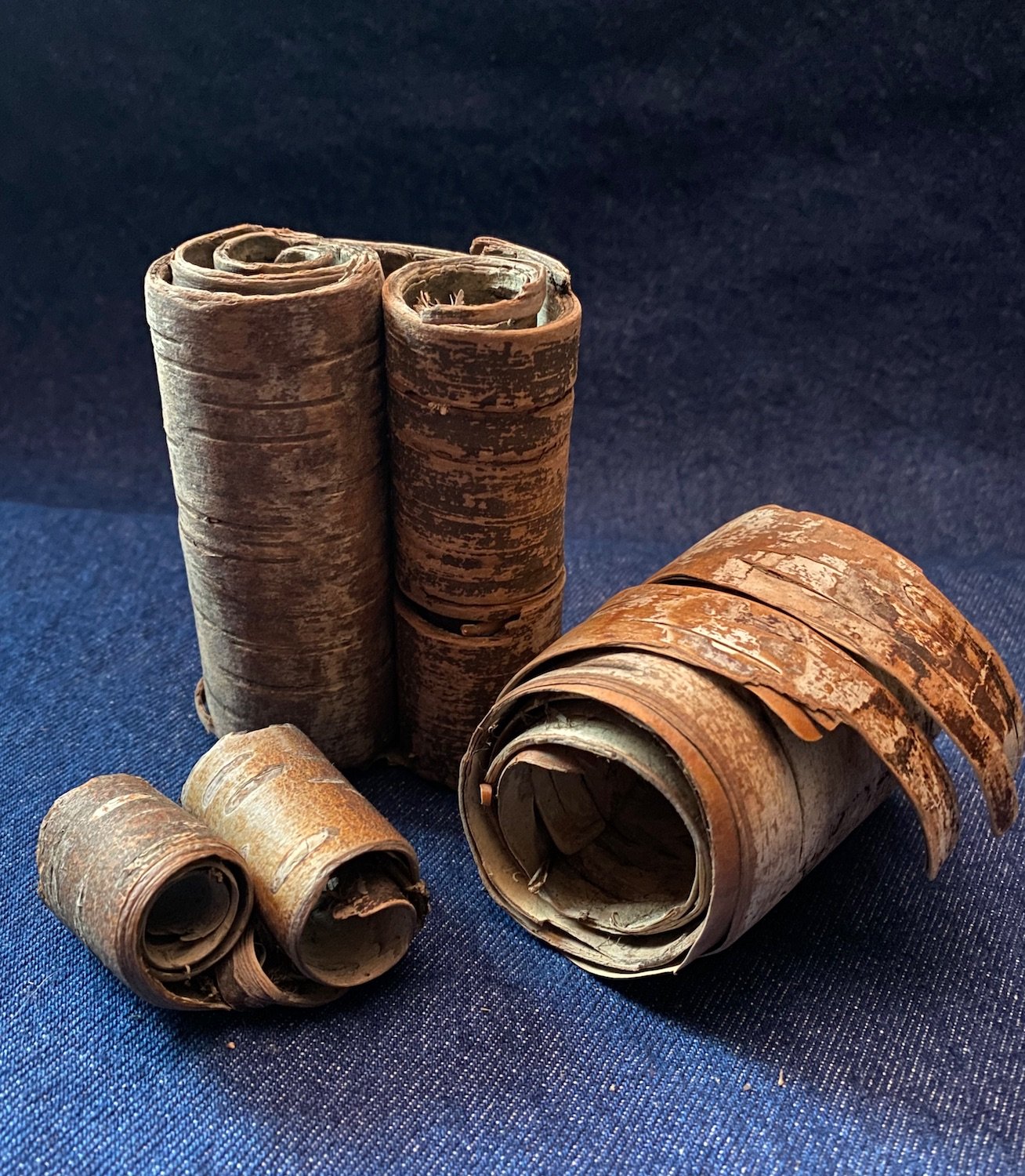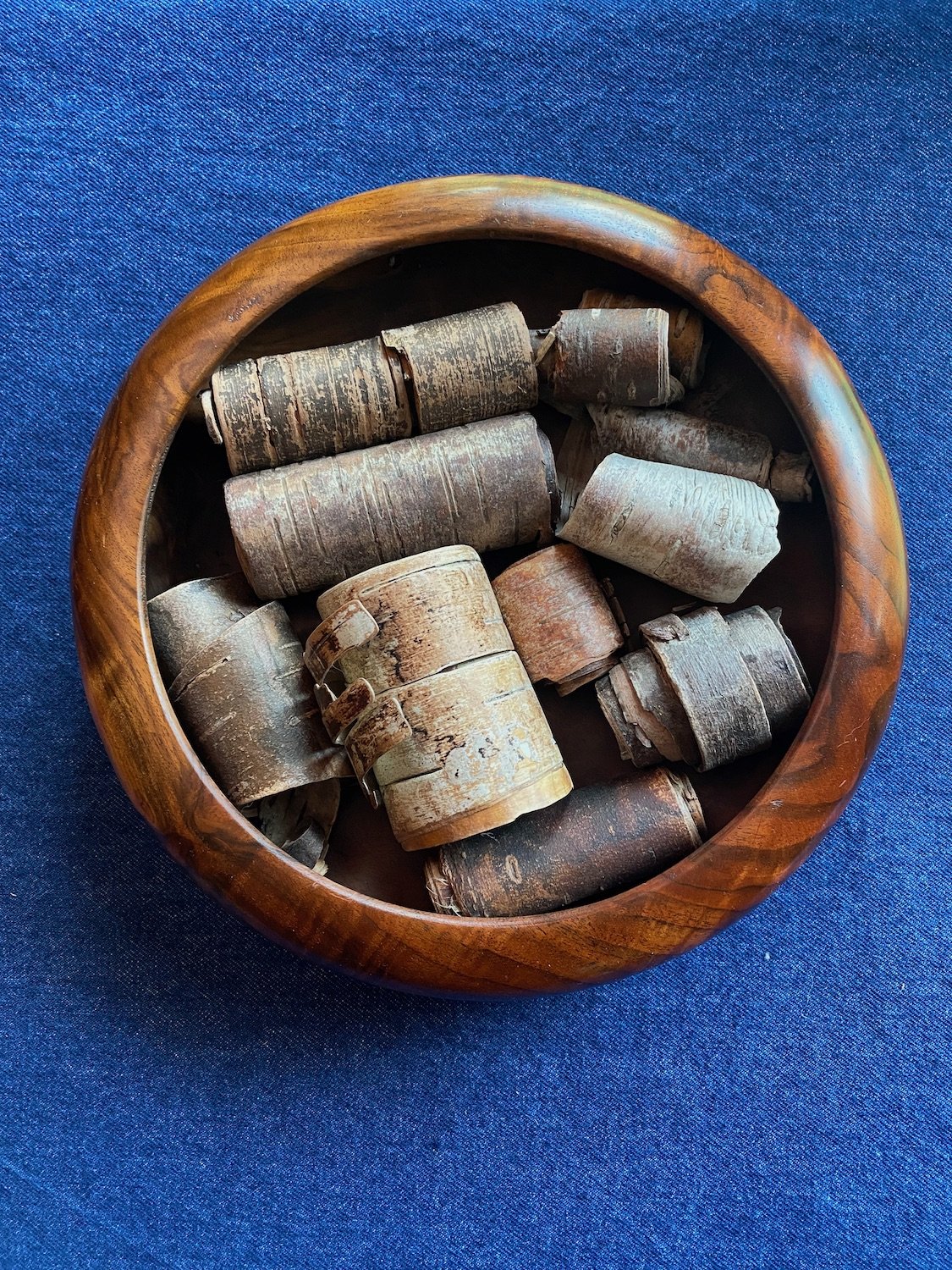 Image 1 of 4
Image 1 of 4

 Image 2 of 4
Image 2 of 4

 Image 3 of 4
Image 3 of 4

 Image 4 of 4
Image 4 of 4





Birch & Cherry Scrolls
Birch-bark is a remarkable natural material: strong, water-repellent, and resistant to decay. Since it can be easily cut, bent, and sewn, peoples across the Northern Hemisphere have made useful things from birch bark since the earliest times. In North America, the First Nations famously used it to build canoes and shelters; they also used it for food containers, clothing, even maps. In Eurasia, birch bark has the distinction of being the original paper. The oldest known Buddhist manuscripts (the Gandharan Texts from western Pakistan) were written on birch bark between the 1st and 3rd century CE.
Most of our scrolls are Paper Birch (Betula papyrifera), although some of the darker ones are actually Bitter Cherry (Prunus emarginata). Bitter Cherry bark also persists in nature long after the original tree has decayed. It, too was used by First Nations peoples for basket-making and medicine. These scrolls are natural forms sculpted by river, wind, and sea. Each one is unique!
Offered in mixed sets of three (large, medium, small), the larger scrolls being approximately 5”-6” long. Available in larger quantities, please inquire if interested!
Birch-bark is a remarkable natural material: strong, water-repellent, and resistant to decay. Since it can be easily cut, bent, and sewn, peoples across the Northern Hemisphere have made useful things from birch bark since the earliest times. In North America, the First Nations famously used it to build canoes and shelters; they also used it for food containers, clothing, even maps. In Eurasia, birch bark has the distinction of being the original paper. The oldest known Buddhist manuscripts (the Gandharan Texts from western Pakistan) were written on birch bark between the 1st and 3rd century CE.
Most of our scrolls are Paper Birch (Betula papyrifera), although some of the darker ones are actually Bitter Cherry (Prunus emarginata). Bitter Cherry bark also persists in nature long after the original tree has decayed. It, too was used by First Nations peoples for basket-making and medicine. These scrolls are natural forms sculpted by river, wind, and sea. Each one is unique!
Offered in mixed sets of three (large, medium, small), the larger scrolls being approximately 5”-6” long. Available in larger quantities, please inquire if interested!